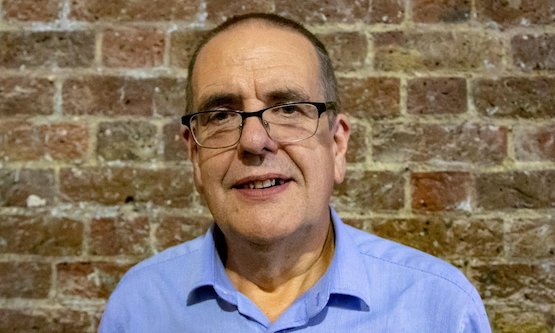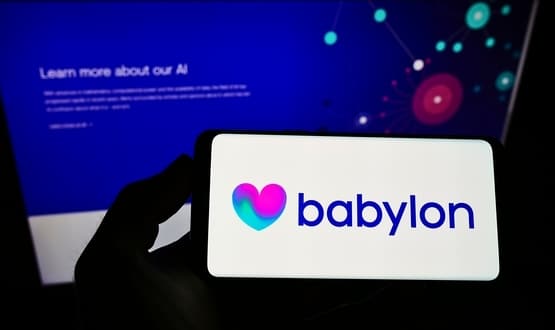I welcome Hancock’s vision, yet can’t entirely eliminate my cynicism
- 19 October 2018

Ewan Davis finds much to be celebrated in Matt Hancock’s new vision of NHS digitisation. But will it actually serve to fix the data fragmentation and lock-in which has been problematic for so long? On that, he suggests, the jury is still out.
I’m a cynical old bastard and have read a lot of documents in the long line that preceded “The future of healthcare: our vision for digital, data and technology in health and care”, Matt Hancock’s initial tech strategy published earlier this week.
I approached reading this policy paper from the health and social care secretary with the same thought as that of the bowl of petunias as it fell to certain destruction in Douglas Adams’ The Hitchhiker’s Guide to the Galaxy: “Oh no, not again”.
However, there is much in this document to be applauded, not least its publication as a beta version which explicitly recognises the need to iterate and improve.
The devil as always is in the detail, but before descending into that I’d like to step back and look at the problem I think this vision is trying to address.
Health IT is broken
Currently health IT is broken. Data is locked into paper records and a multitude of obsolete siloed systems, each with their own proprietary, often idiosyncratic, data formats. Records are fragmented and incomplete leading to inefficient care, poor outcomes and wasted resources.
The NHS consists of islands of excellence within a service that fails to provide continuity of care across increasingly complex pathways.
The vendors that dominate each segment of the IT market deliver obsolete systems, based on designs originating in the last century – before the rise of the internet and the invention of the smartphone.
These vendors form an unresponsive oligopoly in each market segment, relying on system and data lock-in for customer retention rather than quality, service and value. The primary care vendors in particular have attracted the ire of both the current health secretary and his predecesors, but we have the same problem in all market segments.
A massive market failure
There are many innovative developers producing great applications, but they struggle to get a foothold in the market and in the last 25 years none has got to scale (ie. developed beyond a small or medium sized enterprise).
This is evidence of a massive market failure. Innovation never comes from the incumbents – they have too much to lose; only from challenger companies with nothing to lose and everything to gain. If we look at other sectors, the household names that transformed them were unknown 10 let alone 25 years ago. Where are their equivalents in health?
Matt Hancock’s vision looks like a serious attempt to address these issues, but does it go far enough? Will the money follow the rhetoric or continue to be spent on the usual suspects?
Change control
If we want to see digital technology enable the sort of transformational change we have seen in other sectors we need to end vendor and data lock-in, put the control of data firmly in the hands of patients and their care provides, and allow both to open it up to innovative applications that can enable better care.
We need to move away from patient records being fragmented and duplicated across multiple incompatible systems. We need to move instead to an approach that provides a single source of truth, where all applications supporting the care of a individual use a single shared authoritative record stored in a repository chosen by the patient.
This approach is an open platform as characterised by the Apperta Foundation in its publication “Defining an Open Platform”. This lays out some core principle designed to ensure an end to vendor and data lock-in. It proposes the open standards that can support a truly vendor neutral open platform, and enable any willing party to build applications and services that will become part of an open platform ecosystem.
The open platform definition calls for the use of four key open standards. Matt Hancock’s vision mentions only two of them – HL7 FHIR and SNOMED-CT. The other two are IHE-XDS and openEHR. IHE-XDS provides a vendor neutral archive to store images, documents and any other unstructured or semi-structured data. openEHR, meanwhile, provides a vendor neutral archive for fine grained structured and coded data.
A variety of vested interests
They work well together and have been proven at scale as the basis of large open platform implementations in Moscow and Slovenia.
I was recently asked: “If open platforms are such a good idea, why have none of the big incumbent vendors done it?” The answer is simple: they don’t want to. Asking the incumbent vendors to open up their data and support vendor neutral architectures is like asking the Christmas turkeys to help make the stuffing – they might help you find the sage but they are going to hide the onions.
So I welcome Matt Hancock’s vision to do something radically different. I welcome the openness of his approach in seeking to iterate and improve. I particularly welcome his desire to use open standards complying with the Cabinet Office’s Open Standards Principles (although we will have to make an exception for SNOMED-CT, which sadly does not comply).
But I can’t keep the old cynic entirely at bay, and I have some advice for the secretary of state. Those advising you either have a vested interest in the outcome (I certainly do) or they don’t know what they are talking about (I might not). Don’t look for independent good quality advice – it doesn’t exist. Look instead for advice from the innovators who are open and honest about their vested interests.
In particular, be wary of the incumbents who will do all they can to ensure their customers remain locked in and will continue to play lip service to ending it. Interoperability and open APIs are not enough.
Ewan Davis is a digital health strategist, chief executive of inidus and a non-executive director at Digital Health




13 Comments
Ewan Davis is right to applaud Matt Hancock. He is also right to castigate the vendors for frustrating interoperability by pushing their proprietary systems. ( Vendors have always done this throughout the history of the IT industry, and thereby have often brought progress to a near-standstill. I should know; I have been in the industry since 1953.)
But vendors are not the only baddies on why NHS IT has been “broken” over the last 20 years.
Other culprits have been:
1. The doctor/patient-confidentiality mafia, who held up any data-sharing in the NHS for 5-10 years. What infuriated me about these gentry was not that they saw dangers in data-sharing, – which there obviously are – but they refused to engage with the data-sharers to overcome these dangers. They just said “niet”.
2. The “bottom-uppers”, who insisted on developing systems for their own hospital departments, without regard for other departments, other hospitals, other care-workers, like GPs, pharmacists, and totally ignoring the needs of patients.like me.
3. Hospital trusts who insist on doing their own thing, implementing computer systems that are incompatible with the next hospital down the road, and ignoring pleas from on high to adopt data-standards. To them, IT stops at the hospital gate.
4. The ‘top-downers”, who, well-meaningly, tried to impose national systems but are ineffective in engaging with clinicians and hospital managers, to implement what they have planned.
5. The standards bodies who are too wimpish to persuade hospital trusts to implement any standard that they have set.
So, nearly everybody is to blame for the current mess, but everybody blames someone else. I blame myself, because I have been writing stuff about all this for twenty years, but seem to have influenced nobody.
I apologise for harking back to the failures of the past, but I do believe that Matt Hancock has put forward a challenge, which we could easily mess up if we – and he – make the same mistakes. There is a tendency in the NHS not to learn from mistakes!
I said this before earlier in these comments; ‘What are the problems that this technology is going to solve? If they are defined, what are their root causes? If you don’t start from this point, you can throw technology about like confetti and it will have just the same effect – a mess. In 10 months i will ‘celebrate’ half a century in IT so one might infer that I have something to say on these matters at the level of defining and solving issues which IT might aid. Technology is NOT, I repeat NOT, a solution in itself which appears to be the common assumption when I read about the NHS and the ‘new world’ of technology. It is an aid to new processes and arhitectures designed to mitigate these defined issues.
1953 Richard! That’s nearly 30 years longer than me. Indeed, it’s even before I was born – Just! I conducted the funeral a few years back for the only person I knew who worked in UK IT in the 50s.
You are right and wrong on all your points.
1) This has been a battle between a minority of extremists on both sides – The “if you want to use the NHS you must let us do what we like with your data” faction and the “I want you to treat me but you mustn’t record or share any of my data” faction. This has been to the detriment of all. As you say we would have made more progress without these extreme positions. “Fair Shares for All” produced by the BCS PHCSG was an attempt at a balance debate that was ignored. https://www.bcs.org/upload/pdf/fair-shares-for-all.pdf
2) Well this is where most progress has come from, but it has led to the current mess of fragmented silos – But to be fair there was not an alternative if you wanted systems that met your needs you had to do this – There was not the framework of standards or the knowledge or technology to allow anything
different
3) ditto – The detailed and implementable data standards to do otherwise did not exists.
4) Some of them might have been well meaning , but none understood how little they knew about healthcare and top-down attempts have always ended in expensive failure.
5) The standards didn’t exist and it not the standards bodies job to enforce standards that down to Government the NHS and purchasers.
Perhaps today we are getting closer to the open standards we need to deliver joined up digital health care and create an open platform ecosystem. But don’t believe that these standards are yet sufficiently developed and mature to make this easy and don’t believe that the vested interest in the NHS and the vendor community whose jobs and profits depend on the status qou are going to help.
You are absolutely right that the NHS does not learn from its mistakes. Most of the current NHS IT leadership is new to sector they don’t know the History and are thus doomed to repeat its mistakes, while the few that do are keeping there head well below the parapet.
There is hope https://openplatforms.apperta.org
Good one Ewan. Good deployment of H2G2 wisdom too. The cultural issues are always neglected in digital transformation, and these too need to be acknowledged and managed. Matt Hancock has noted this: only 10% of the problem is the tech, 90% is the culture.
Remember what is always involved in IT activity: 3 Ps; People, Processes & Products (called technology in IT). I often think of IT business projects as a similar to making a shaped jelly for a kid’s birthday party. You might first decide what shape is needed by asking the child what shape he/she wants (say, rabbit), then fashion that shape using appropriate processes and techniques, review it with the client (child), if acceptable then pour in the technological jelly.
You do not simply pour the jelly on a plate since it does not fit the specification of a rabbit. This latter method is often tried, resulting in jelly all over the table and an upset client (child). I trust you and Rt. Hon. Matt get my drift.
big ORGs, big deals, tight contracts, try SMEs, they are far more agile and often far more motivated to do a quality job and not drag IT out …
Thanks Ewan for your comments. Well founded. As an example lets look at the work led by Kevin Jarrold on NPfIT, LPfIT and then Imperial and Chelsea & Westminster £billions spent and little if any real data sharing and that’s after the IDX implementation at UCLH. Where did all the money go and to whom? What has been achieved?
We need to remind ourselves that ‘The NHS consists of islands of excellence within a service that fails to provide continuity of care across increasingly complex pathways” and IT will not yet, if ever, replace the human continuity of care we lost when clinicians stopped working 1 in 2 rota i.e. 100-120 hrs a week. We now generate so much data about patients and expect it to be acted upon immediately so that human continuity is impossible with modern safer working practices. IT and the four standards listed by Ewan can however help particularly open EHRs which can I believe still be achieved via an open version of the GP records that the patient should have access to at present and could be verified and consented to be shared by the patient eg the shared Great North Care Record
Ewan’s article is a breath of fresh air. Regardless of the market sector, vendors’ primary responsibility is towards their shareholders through the maximisation of revenue and profit. They need incentives to do things differently – that’s how capitalsism works.
May I add two sceptical questions to the list?
1) Where’s the business case for delivering Mr Hancock’s vision?
2) How is it going to be funded?
Without funding all the alphabet soup of synonyms and acronyms in the World aren’t going to fix NHS and Social Care IT.
I would add ‘What is the problem to which all this technology is the solution’? What Ewan says is probably true (I am an outsider) but the problems must be defined in detailed, granular fashion together with the consequences if they aren’t fixed. This allows priorities to be set for tacking them to avoid ‘boiling the ocean’, trying to solve everything at once. Hopefully there will be solutions which can be applied to other, less urgent issues.
IHE is a very good set of patterns, whenever I’m working on a problem I always go there first. It shows me what the business is after (use case), what the interactions are, an outline of the model, etc. Most of the docs follow a pragmatic pattern using UML diagrams where necessary.
Alongside that, the IHE model may not be too brilliant but openEHR has a really good library of information models which tell me what kind of data the clinician is after, what codes to use, etc. FHIR isn’t very good at doing this, on simple problems neither is openEHR (a spreadsheet would be better). I would recommend looking openEHR’s information models.
At times FHIR does a very good job at this information model. e.g. for IHE-XDS metadata the FHIR DocumentReference is the easiest model to understand. It covers all the common metadata.
What I don’t agree with is coupling these patterns and models strongly to actual implementations especially at the technical level. Where it needs to be done, yes do it but we also need be able to implement the design (inc pattern+model) in more simple and practical ways. Otherwise emailing a PDF over NHS.net is always going to win.
Not going to comment much on openEHR, it has value but the problems are less technical at the moment. Sorry.
What Ewan means about IHE-XDS is cross organisation sharing of documents, it’s quite a simple piece of work. Majority of NHS Trusts have documents, they need to share them.
It is included in Matt Hancocks version in it’s modern form: IHE-MHD or FHIR.
re IHE-MHD: “The MHD Profile does not replace XDS. Rather, it enables simplified access by mobile devices to an XDS (or a similar) document management environment containing health information.” from https://bit.ly/2Aijt8C
For clarification when this doc reaches next version?
But the omission of OpenEHR from the text, and from Annex B of Sample Standards, is shurely shome mishtake? As well as the international use Ewan describes, the archetype specification is now an ISO standard (ISO 13606-2).
Standardising each of the clinical data models that we have allowed each vendor to invent is essential for semantic interoperability, and currently only OpenEHR offers international clinical provenance of its models, and publishes them for use f.o.c.
Perhaps the document has been long in gestation and not updated to reference its use now e.g. in Plymouth?
Comments are closed.